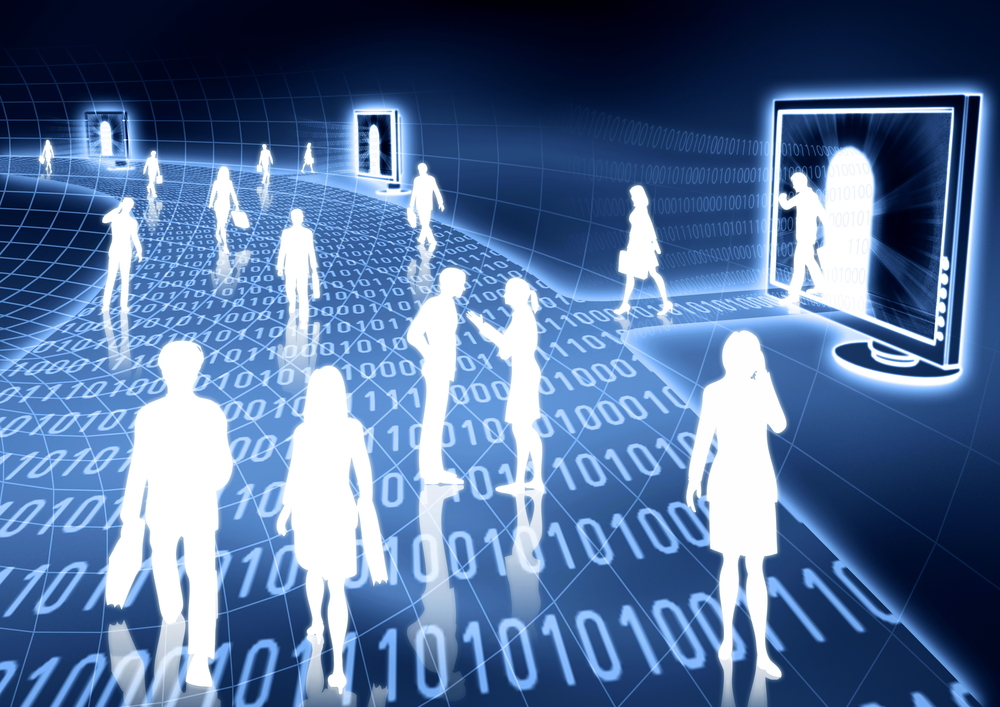Don’t let the word “digital” fool you in all this talk about how difficult it is for digital natives and digital immigrants to communicate. The truth is that this generational gap between the so-called digital natives (the generation of people born during or after the rise of digital technologies) and the digital immigrants (people born before the advent of digital technology) doesn’t actually have to do with technology. The real issue is that the two worldviews that they represent are so different.
Digital natives view the world horizontally, in equalitarian terms. Rather than dividing the world into hierarchies, they see everyone as existing on an equal level. They embrace the benefits of sharing things and ideas with each other and, in doing so, they cross boundaries. They are driven by values. For this reason, many of them are distrustful of traditional cultural and social institutions: marriage, religion, government. In opting out of these institutions, they have declared themselves microsegments of one – free agents.
The advantage of a digital native’s worldview is the genuine democracy and equality that comes out of their rejection of centralized and control based forms of governance. The downside is that they’re unlikely to build anything that requires intensive capital, tangled complexity or tremendous magnitude—going to the moon, curing cancer, recreating the power grid: large-scale projects that need vertical organization by goal-oriented, focused people.
Where digital natives imagine a world with little institutional structure and open access to people of diverse backgrounds, the culture of digital immigrants is a meritocracy. Typically a more aggressive, competitive and results-obsessed generation, they are often seen as cutthroat by their younger associates. The advantage here is productivity: digital immigrants are goal oriented as opposed to the value orientation of the digital natives. While they have the ability to get things done quickly they may overlook the long term consequences of their actions. Workaholics are not an uncommon manifestation of this win at all costs world view.
The paradox here is that digital immigrants, for the most part, invented the complex technologies and systems that digital natives use fluently – the Internet, microchips and the ubiquitous cloud comes to mind. In this way, digital natives and digital immigrants must grow to work together and learn from each other.
What can digital natives teach digital immigrants?
- To collaborate across boundaries, with a variety of people
- To make a place in life for values
- To build solutions that are horizontal
What can digital immigrants teach digital natives?
- To achieve goals quickly
- To use focused resources in building things to scale
- To revitalize or repurpose existing institutions
Think about this: digital immigrants may have invented the technologies that digital natives use but didn’t accurately anticipate how they would use them. For example, text messaging (SMS) was developed in the 1980’s as an easy way for service engineers to quickly communicate regarding outages and replacement parts. It would have been unimaginable then that young people would chat and twitter using the service instead of talking on the phone. It is the combination of the two world views that has produced for better or worse a new form of communication and multibillion dollar industry. If we allow an opening for an ongoing dialogue between these two generations, we can all achieve things that we wouldn’t otherwise be able to do.
The irony is that, eventually, we will come full circle: the children of digital natives will act like digital immigrants. This is just how things work: we see the world differently from the people who came before us. Generations are simply oppositional in nature. But they don’t have to be at odds with each other. It’s about talking with and learning from people who you normally wouldn’t work with, who don’t see things the way you do. What will you do to start a dialogue with a generational stranger, your digital other?
